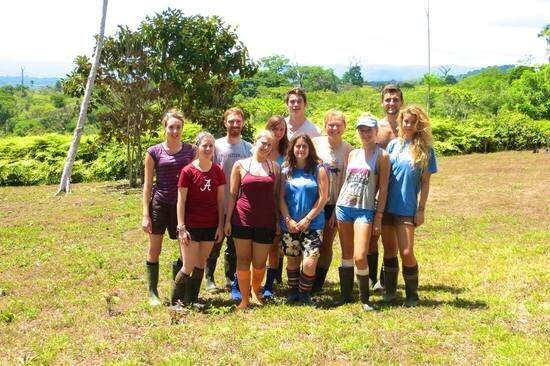When volunteers come out to conservation projects they like to get involved with surveys in the hope of seeing interesting animals. But volunteers don't always realise where the data they are helping to collect goes.

Image courtesy of Frontier Costa Rica
Before any survey begins a proposal is created. This will include deciding what question it is you want to try and answer (for example, are there more snakes in the dry season). This is then turned into a hypothesis which will say what it is you predict to find (i.e. there are more snakes in the dry season) but will also include a null hypothesis which predicts that there will be no correlation between the seasons and the amount of snakes found.
Next, you decide how you will answer the question - the method of data collection - and then carry out a pilot study to see if it is a good way to collect the data. If it proves successful and the proposal is approved the surveys will begin. Once enough data is collected it is put into an excel spreadsheet and then fed into various statistics programs.
Tables and graphs provide a visual representation of the data so that it is more easily understood. You are able to test things such as correlation - whether one variable affects the results. For the current primate surveys in Costa Rica, data on Distance is being used. The data collected represents a sample of the total forest area. The program then takes this and predicts what the results would be for the whole forest to find out how many monkeys there are in the area.
Another instance is butterflies, in Costa Rica survey data is put into a program called Estimates. This has a species richness curve. When this curve levels off in the table, it shows that no matter how many more surveys are carried out we are unlikely to find any further butterfly species. This helps us to know when to stop surveying.
All the programs rely on enough data being passed through them enough times to come back with the most accurate results possible and this is where volunteers are vital to conservation research. These results are then used to discover whether the initial hypothesis was correct and strategies for how to protect biodiversity can be formulated.
No-one should feel intimidated by the idea of joining a scientific research study; there will always be plenty of staff and other volunteers that will be happy to help you learn about the project. The most important thing to remember is that although data and statistics can seem daunting at first, they can quickly be understood and are a vital part of scientific study - so don't be afraid!
Author Jenny Collins is the Costa Rica Field Communications Officer for Frontier. Frontier is an international, nonprofit volunteering NGO with over 300 dedicated conservation, community development and adventure projects worldwide. To find see more from projects please visit Frontier's Facebook, Twitter, YouTube and Pinterest, or see photos shared by volunteers in the field by searching #frontiervolunteer on Instagram.
